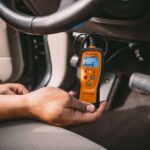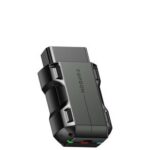Obd2 Remapping Software is at the heart of modern vehicle tuning. This article delves into the world of ECU remapping, exploring the tools, software, and techniques used by professional tuners. Understanding these elements is crucial for both tuners and car enthusiasts seeking to optimize vehicle performance.
Essential OBD2 Remapping Tools
Several reputable tools are available for reading and writing data to Engine Control Units (ECUs), enabling OBD2 remapping. These tools provide the interface necessary for modifying the vehicle’s software.
-
Alientech: This Italian company offers the K-TAG for bench flashing and the KESS for OBD flashing. They are known for their wide dealer network and prompt support, but their tools can be expensive.
-
CMD Flash: CMD excels in support for VAG (Volkswagen Audi Group) vehicles and offers comprehensive OBD solutions for various models.
-
Magic Motorsports: Known for cracking ECU protocols early on, Magic Motorsports provides the Mag Pro2 XL17 for both OBD and bench flashing.
-
MPPS: This tool boasts broad vehicle support and free lifetime updates, making it a cost-effective option for tuners.
-
Dimsport: While offering a touch screen interface with the New Genius (OBD) and New Transdata (bench), Dimsport is less prevalent due to its higher price point.
Professional tuners often invest in multiple tools to ensure compatibility with a wide range of vehicles and ECU types.
Utilizing OBD2 Remapping Software: Custom Tuning vs. File Suppliers
Once equipped with a master tool to read and write ECU data, tuners have two primary options: creating custom remaps using tuning software or purchasing pre-made MOD files from suppliers.
Custom remapping requires specialized software and in-depth knowledge of engine management systems. WinOLS is the industry-leading software for custom tuning, offering comprehensive control over various engine parameters. ECM Titanium from Alientech provides a more user-friendly interface but with limited functionality. Swiftec offers modules for specific tasks like EGR and torque monitoring adjustments.
Alternatively, tuners can purchase MOD files from suppliers, providing a quick and cost-effective solution for common vehicle models. However, relying solely on pre-made files might not address specific customer needs or optimize performance to the same extent as custom tuning.
The Art of ECU Tuning: Understanding Key Engine Maps
Effective OBD2 remapping involves modifying specific engine maps within the ECU software. These maps control various aspects of engine performance, including:
- Driver’s Wish Map: Adjusting this map impacts throttle response, often providing a noticeable but potentially superficial performance improvement.
- Smoke Limiter Maps: These maps regulate fuel delivery based on air intake to control exhaust smoke.
- Torque Limiter Maps: Multiple torque limiter maps exist, influenced by factors like atmospheric pressure, gear selection, and coolant temperature.
- Injection Maps (SOI/Duration): These maps govern the timing and duration of fuel injector pulses.
- Turbo Boost Pressure/Limiter Maps: These control the boost pressure generated by the turbocharger.
Manipulating these maps requires expertise and careful consideration to avoid negative consequences like engine damage or excessive emissions. Professional tuners often invest in DAMOS or A2L files, which provide detailed information about the specific ECU and its maps, enabling precise and safe adjustments.
Conclusion: Choosing the Right OBD2 Remapping Solution
OBD2 remapping offers significant potential for enhancing vehicle performance, but it requires specialized knowledge and tools. Understanding the different OBD2 remapping software and hardware options, as well as the intricacies of engine mapping, is essential for achieving optimal results. Whether opting for custom tuning or utilizing pre-made files, choosing a reputable tuner with the necessary expertise is paramount for a safe and successful remapping experience.

